

Josh Nevett
CarExpert's top five mid-size SUV reviews of 2025
6 Days Ago
The MG ZS EV Essence is the most expensive version of the cheapest electric vehicle on sale in Australia – is it the pick of the range?
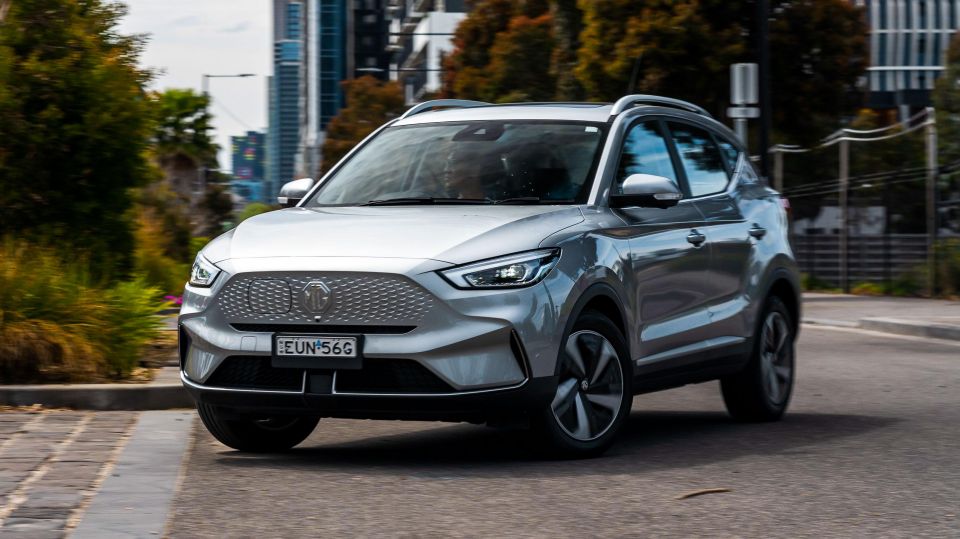
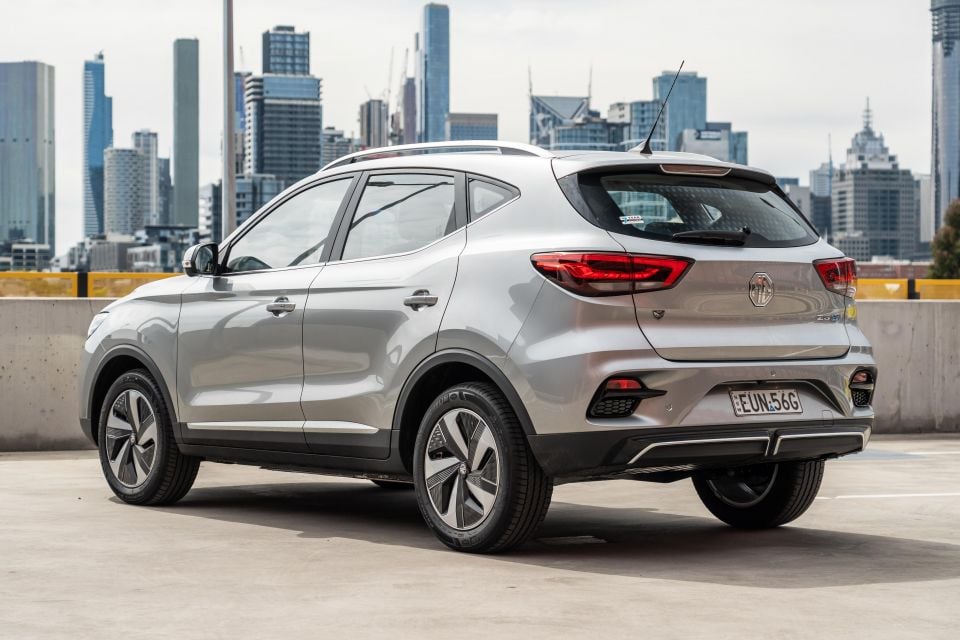

Quickly see how this car stacks up against its competition. Select any benchmark to see more details.
Where expert car reviews meet expert car buying – CarExpert gives you trusted advice, personalised service and real savings on your next new car.
The MG ZS EV in updated form is still the most affordable electric vehicle (EV) on sale in Australia, starting at $44,990 drive-away nationwide.
It comes with a refreshed look inside and out, along with more claimed range and a new software architecture called iSmart which supports over-the-air updates, remote control of the locks and air-conditioning, Amazon Music streaming, as well as live weather and traffic updates.
The Essence trim on test here is the flagship model in the range and starts at $48,990 drive-away. It can be distinguished on the outside by its silver roof rails and panoramic glass sunroof.

This small electric SUV is currently one of the top-selling EVs locally and goes head-to-head with vehicles like the BYD Atto 3, Hyundai Kona Electric, Nissan Leaf, and Mini Cooper SE.
The real question though, is how the ZS EV will stack up against tougher incoming competitors such as the Cupra Born, BYD Dolphin, GWM Ora Good Cat, and its upcoming MG 4 stablemate.
The electric vehicle world is moving fast, and the ZS EV will need to be good to stay ahead of the curve.
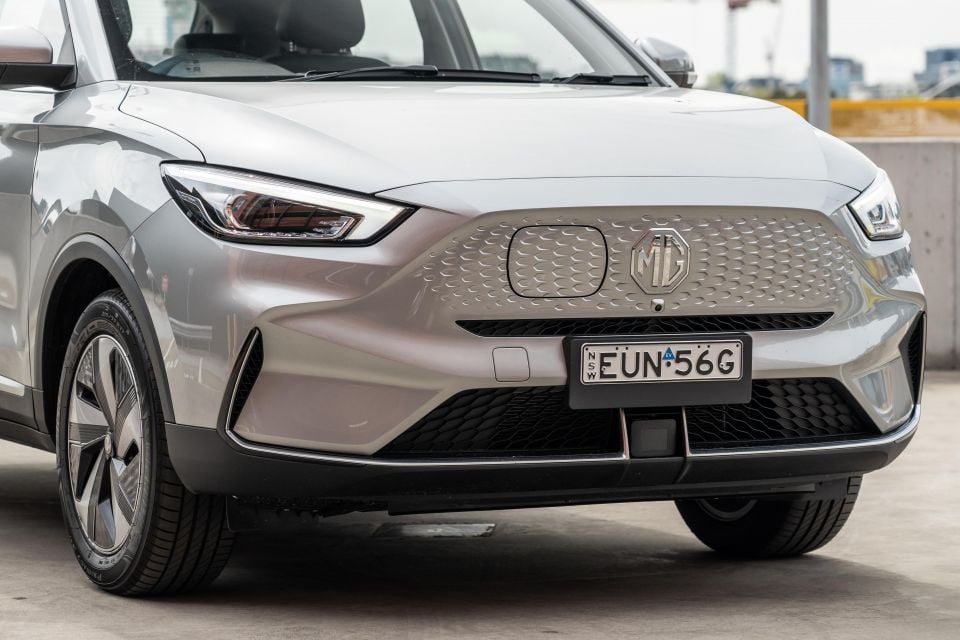
The MG ZS EV Essence is the flagship variant in the range, priced from $48,990 drive-away nationwide. It’s $4000 more expensive than the entry-level Excite variant, which is currently the cheapest EV in Australia.
Our tester was finished in Sloane Silver metallic paint, which costs an additional $700, bringing the total to $49,690 drive-away.
With many states now offering EV rebates – NSW, Victoria and Queensland all offer $3000 one-off payments – the ZS EV Essence is closer to the mid-$40k range for most buyers. As a point of reference, the top-of-the-range MG ZST Essence on which the updated ZS EV is based costs $33,990 drive-away.
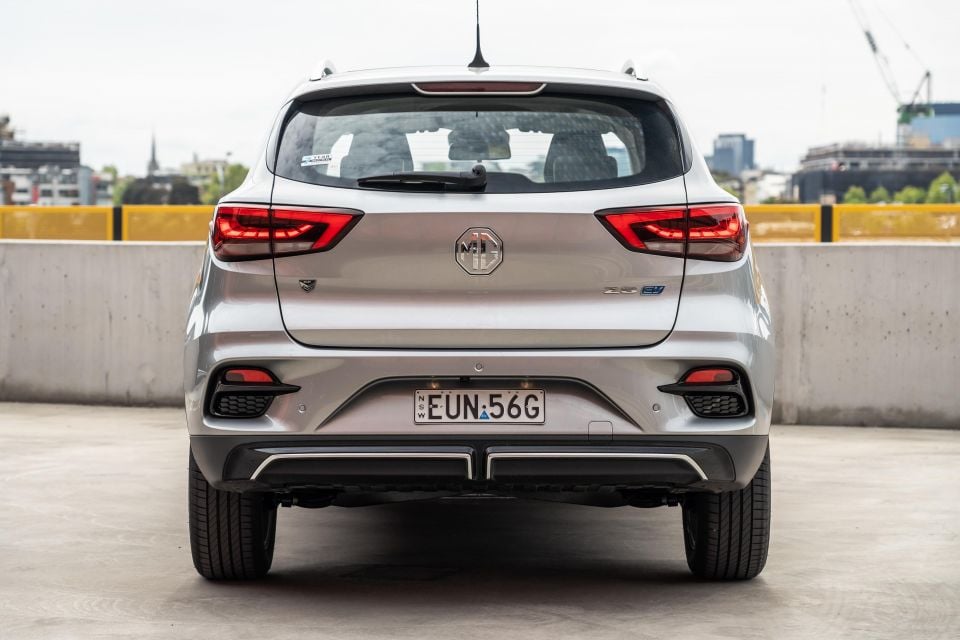
The ZS EV Essence’s closest competitor currently in terms of both claimed range and standard features is the BYD Atto 3 Standard Range, which will cost $48,011 before on-road costs when it touches down.
Other electric vehicles that are a bit more expensive but still compete against the ZS EV, include the Nissan Leaf ($50,990), Hyundai Kona Electric Elite Standard Range ($54,500), and the Mini Cooper SE Classic ($55,650).
The ZS EV Essence also lines on price with petrol-electric hybrid SUVs including the Toyota Corolla Cross Atmos 2WD Hybrid ($46,050), Honda HR-V e:HEV L ($47,000 drive-away), and the Mitsubishi Eclipse Cross PHEV ES ($46,990). You can also get into the larger MG HS Plus EV Excite plug-in hybrid from $49,690 drive-away.
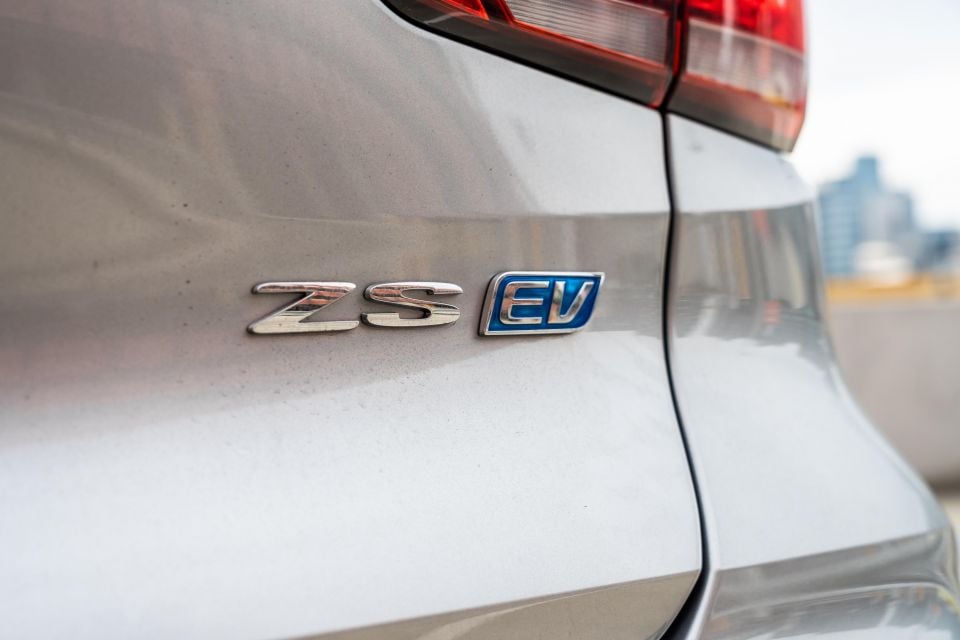
2023 MG ZS EV pricing:
All pricing is drive-away and before any rebates
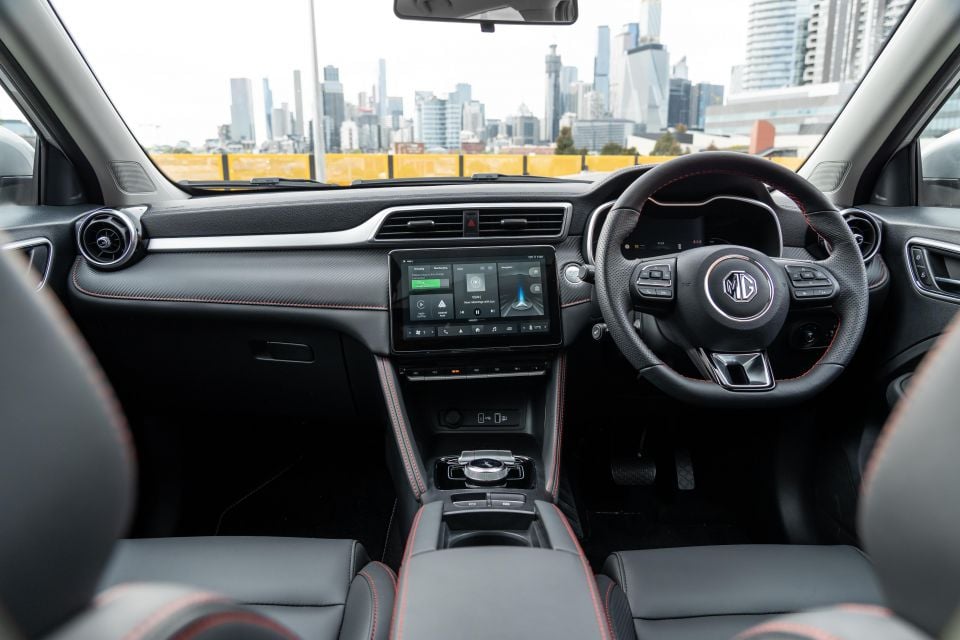
Buy your new car without the stress. It's fast, simple and completely free.

Great service from Travis and team, second time I have used this business would not hesitate to recommend them to anyone
Craig C.
Purchased a Ford Ranger in Sunshine Coast, QLD
CarExpert helped Craig save thousands on his Ford Ranger, now let us save you on your next new car.
Find a dealThe interior of the MG ZS EV Essence is designed to wow you from the get-go, and for the most part it lives up to this expectation.
The synthetic leather seats are inoffensive in terms of design and have some racy elements, including red contrast stitching and carbon-fibre-esque panels that continue on the dash and door cards.
The driver’s seat has six-way electric adjustment, which makes dialling in your seating position easy because you don’t have to faff around with levers and dials.
Unfortunately the driver’s seat base angle isn’t adjustable which makes it hard to get the position exactly right. This is exacerbated by the lack of reach adjustment on the steering wheel. It felt like I was sliding forward off the seat.
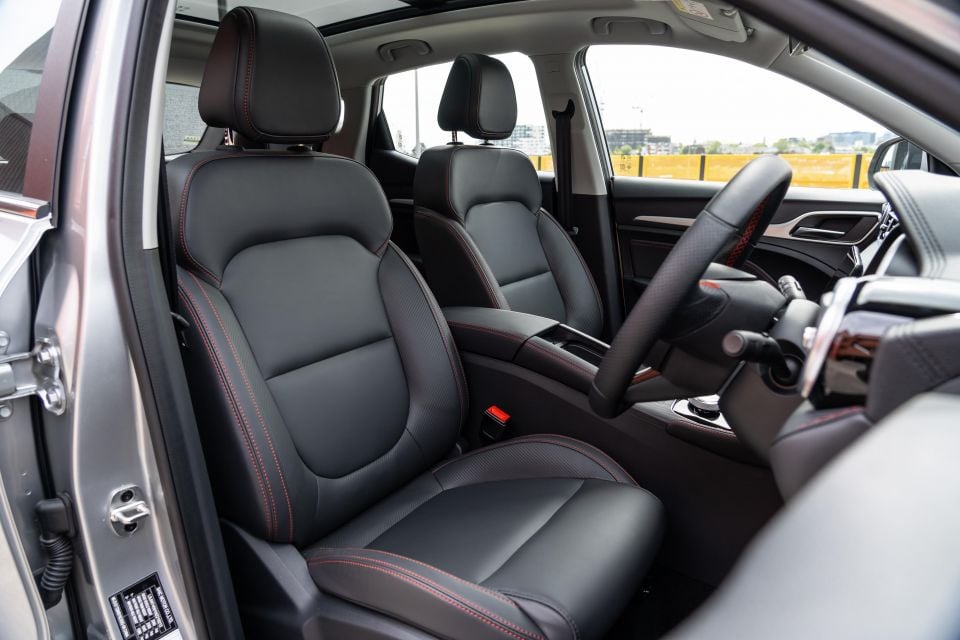
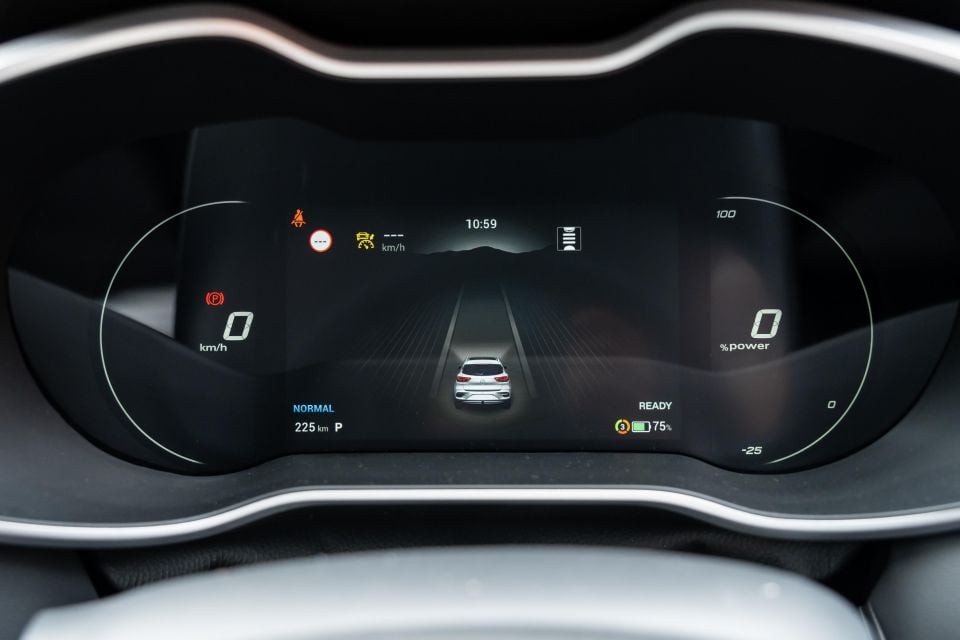
Ahead of the driver is a 7.0-inch digital instrument cluster flanked by some basic alarm clock-style digital readouts for the speedometer and power output.
It’s nice to always be able to see your speed in digital form, and it’s fun to monitor how much (or how little) power the car is using on the move.
The statistics menu in the digital instrument cluster is fun to play around with if you’re an EV data nerd, and shows some necessary information, such as your energy consumption. There’s another page showing your tyre pressures and even the 12V battery status.
When you’re driving and have adaptive cruise turned on, the digital instrument cluster always defaults to the vehicle distance setting page. This can be infuriating, because I don’t want to be forced to change screen menu all the time.
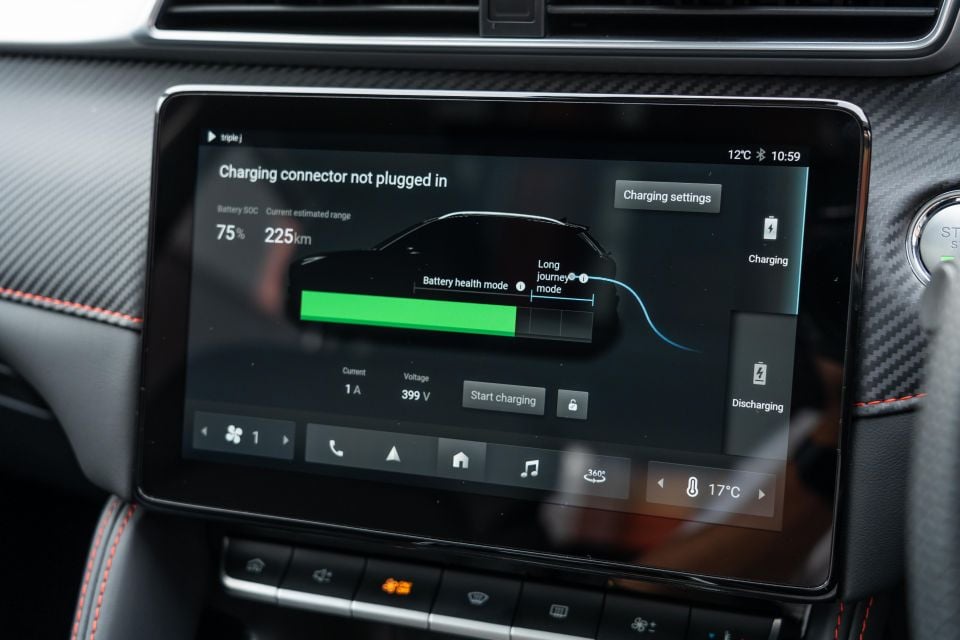
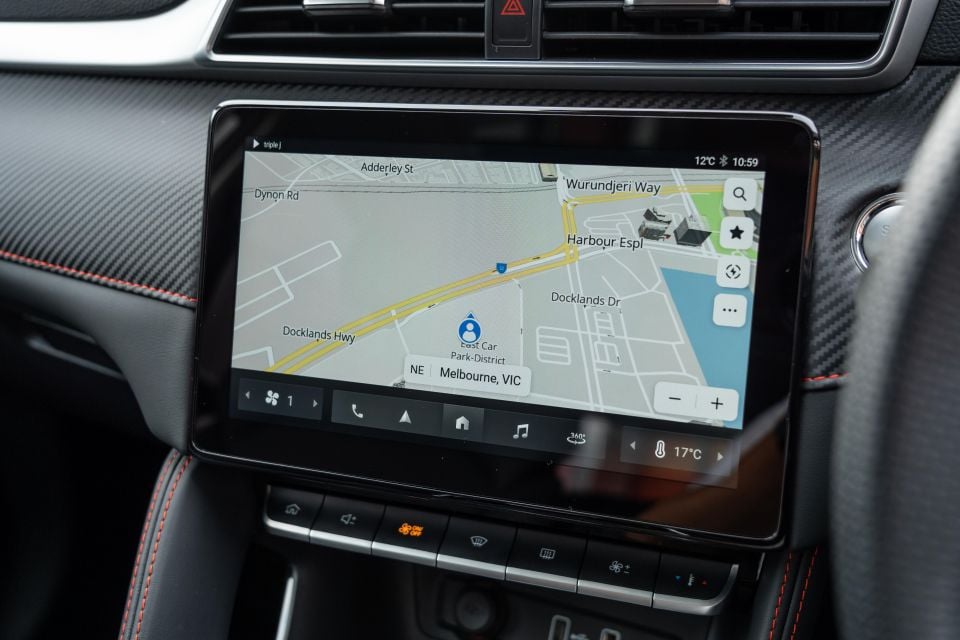
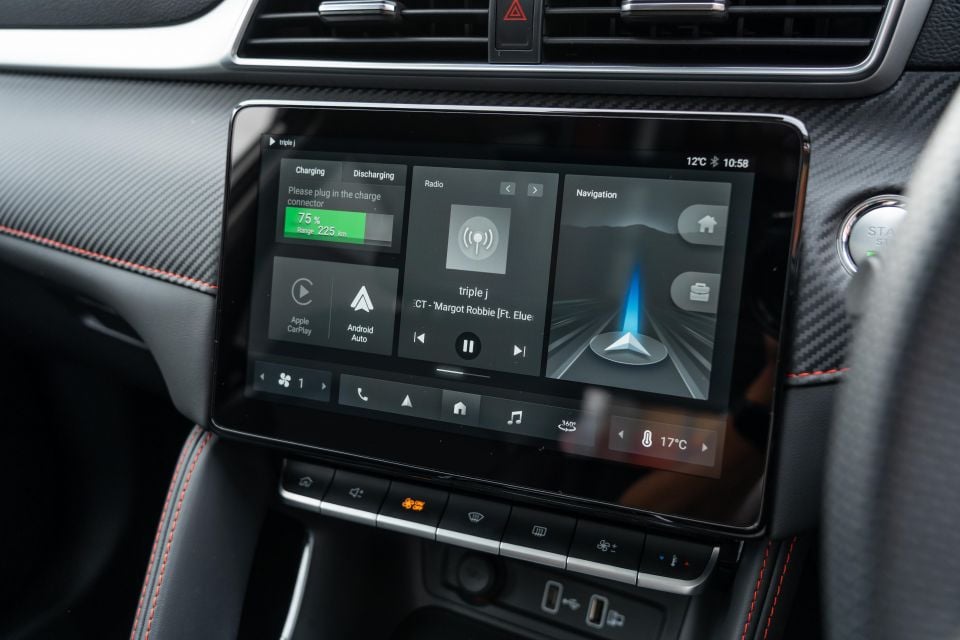
The 10-inch touchscreen infotainment system makes quite a statement on the dash as it’s mounted prominently like a tablet. It has a high resolution, and packs a decent amount of processing power. New pages load quickly, and you don’t have to wait long for the system to fire up when you sit down.
Although the screen looks great, there are some functionality issues as it can be hard to swipe, and the digital shortcut buttons take a couple of stabs at before working properly. I found I had to make exaggerated swiping or touch motions in order to get the correct response.
Built-in satellite navigation is standard across the ZS EV range, and it looks and feels modern. It has EV charge locations built in so you’ll always know how far you are from your nearest charger, although it doesn’t have live traffic.
Apple CarPlay looks quite nice on the touchscreen, though it’s only available in wired form. I found it a bit hard to find somewhere to slot my iPhone 12 Pro Max when plugged in, instead it ended up in the way of the gear selector.
The majority of the time I ended up putting it on the wireless charger, which is nice to have, but felt redundant because my phone was plugged in the whole time.
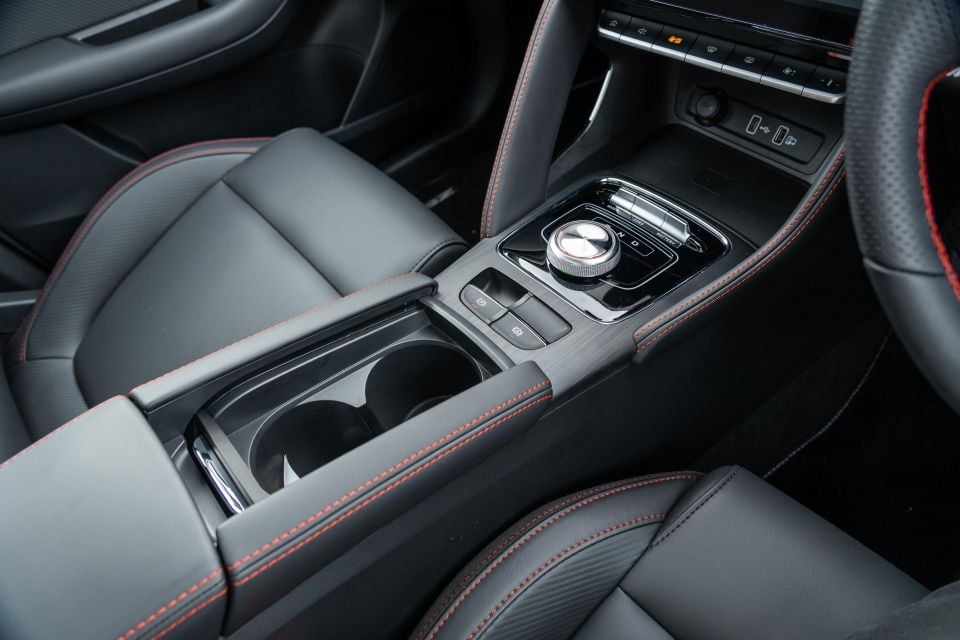
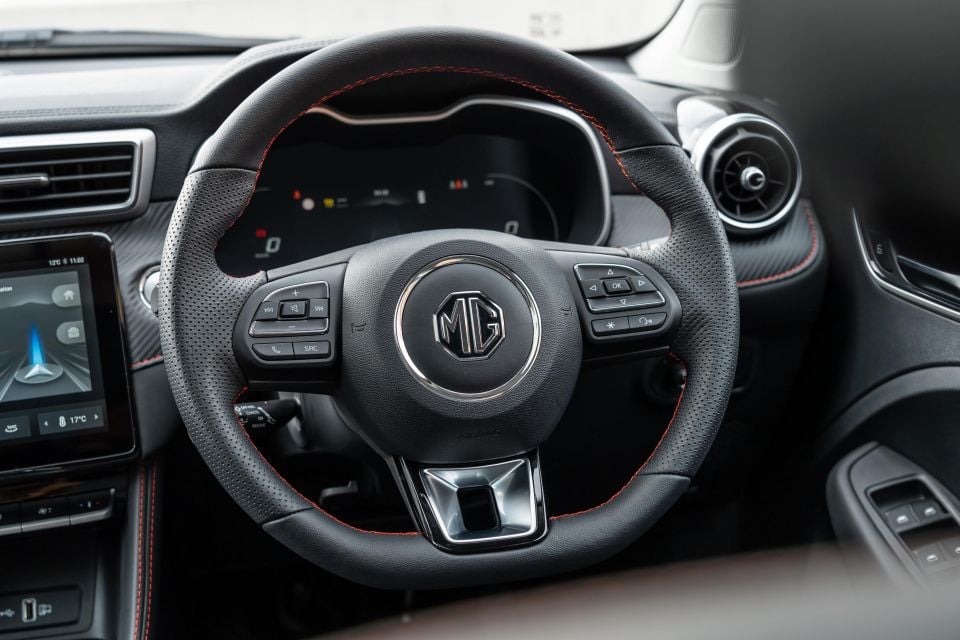
It’s also a little frustrating that the majority of the climate control settings are hidden in the touchscreen. There are physical switches for the temperature, fan speed, and de-misters, but if you want to turn on automatic climate and the heated seats, as examples, you have to dig through menus.
To the left of the driver’s knee is a rotary gear selector, as well as rocker switches allowing you to flick through levels of strength for the regenerative braking (KERS in MG speak), drive modes (Eco, Normal, Sport), or shortcut to the battery menu on the touchscreen.
The centre console is largely covered in soft-touch materials for the high-traffic touch points, but you don’t have to look far to find some harder plastics.
The centre armrest is set high and doesn’t align with the armrest on the door. There’s no way to adjust the height or position of the centre armrest to amend this either.

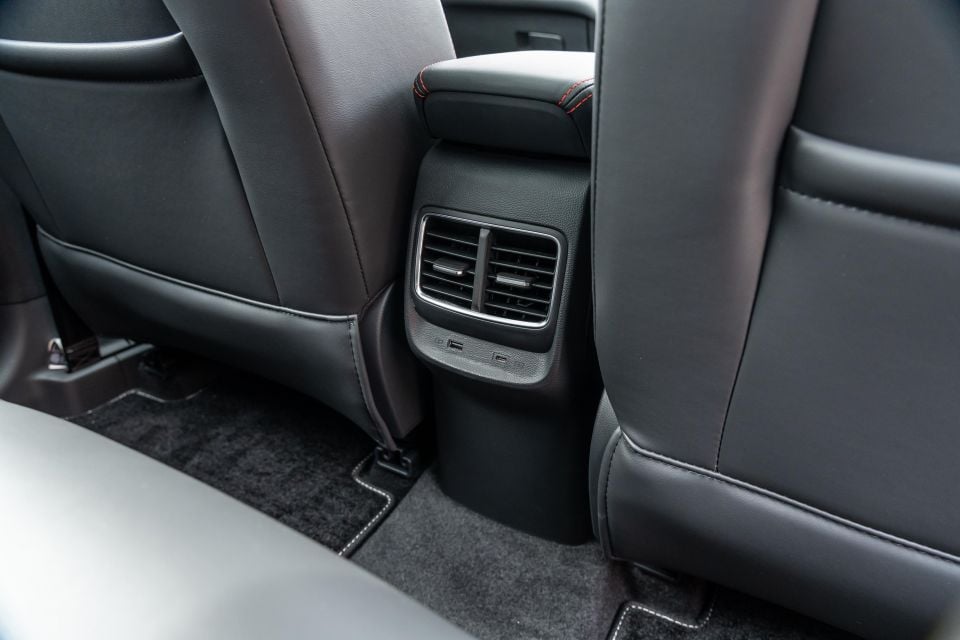
A large panoramic glass roof fills the cabin with light. It opens quite wide over the front passengers and lets a lot of fresh air in, although our tester developed a rattle somewhere in the sunroof which stood out due to the lack of engine sound.
Moving into the second row there’s a noticeable step down in quality. The soft plastics continue somewhat on the door armrest as an example, but the rest is hard.
At a leggy 182cm I find it hard to get comfortable in the second row of the ZS EV as there isn’t enough legroom behind my driver’s seat position. It doesn’t help the glass roof eats into the headroom, and there’s no centre armrest.
Kids will be able to get comfortable back there, and adults will be fine for shorter trips, but this isn’t a full-sized family SUV.

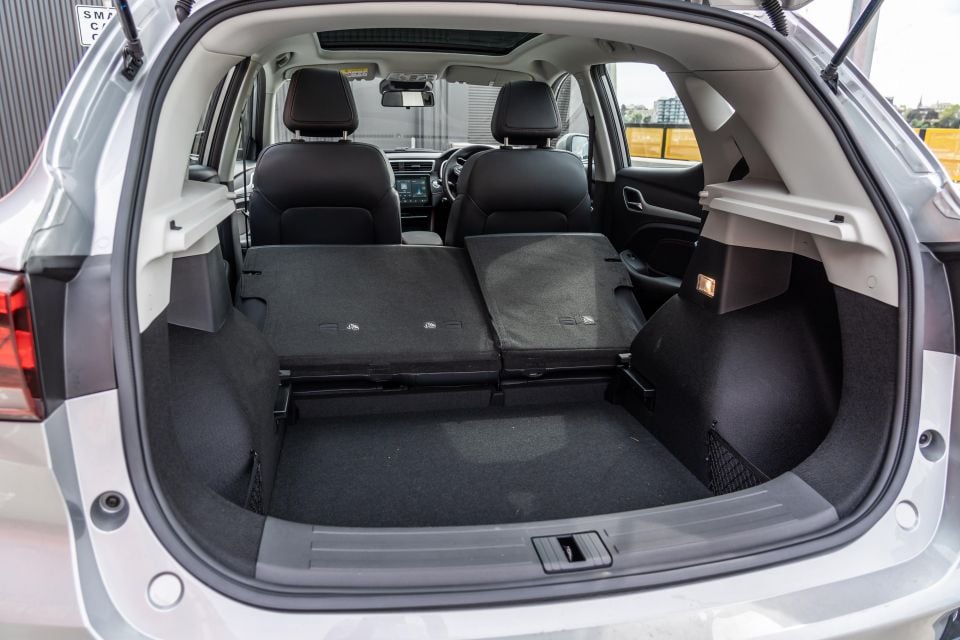
One nice touch though for rear occupants are the air vents in the back of the centre tunnel.
It also has a completely flat floor which is something not a lot of EVs based on combustion-powered platforms have, making the middle seat easier to occupy.
The boot measures in at a reasonable 359 litres with the rear seats upright. It’s quite deep and has some handy netted areas on both sides for loose items.
There’s no spare wheel, which isn’t out of the ordinary for EVs, with a tyre repair kit instead.
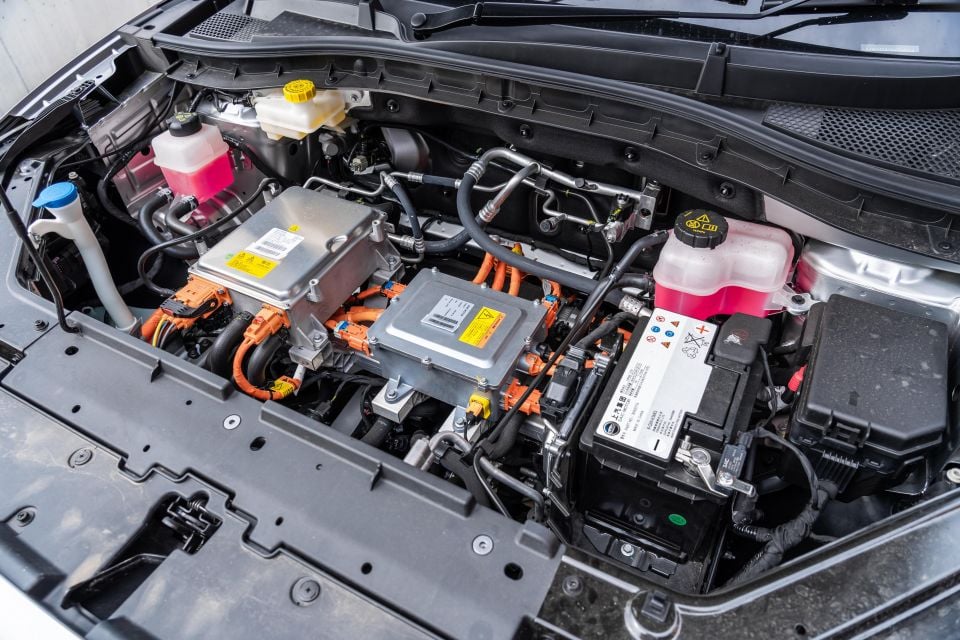
The updated MG ZS EV range is powered by a single, front-mounted electric motor producing 130kW of power and 280Nm of torque. This is 25kW more but 73Nm less than the pre-update version.
Power is sent though a single-speed transmission to the front wheels exclusively. MG claims the ZS EV can do the 0-100km/h sprint in 8.2 seconds, which is 0.6 seconds faster than the pre-update model.
It’s mated to a 50.3kWh lithium iron phosphate (LFP) battery pack, with a WLTP combined driving range of 320km. That’s up from a claimed 263km of range in the pre-update car, and is broadly in keeping with what you get in an Atto 3 SR (345km) or a Nissan Leaf (311km).
LFP battery chemistry is traditionally cheaper and safer than nickel-based batteries, but the cells are less energy dense.
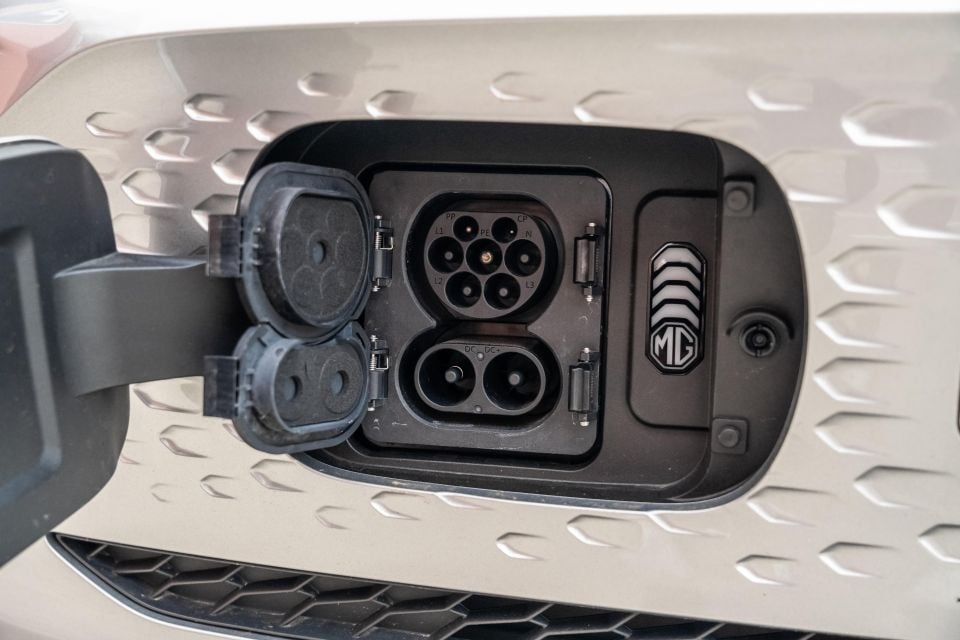
MG claims the ZS EV’s energy consumption is 17.1kWh per 100km on the WLTP combined cycle. We saw an average of 17kWh per 100km over a mix of city and highway driving.
Using this average energy consumption as a guide, you should get a theoretical real world range of around 295km.
A 7kW AC wall box charger will fully charge the battery in around 8.0 hours; a 50kW DC public charger will charge from 0-80 per cent in 54 minutes. Peak DC charging speed is said to be 80kW, which I saw briefly while doing a fast charge.
A trickle charger comes standard with the car, and lives in a neat storage area under the boot floor. This charger can be plugged into a regular three-pin powerpoint.
The updated ZS EV also offers vehicle-to-load (V2L) output at up to 2.5kW from its exterior charging point using an adaptor. This means you can power things like a TV, microwave, or coffee machine.
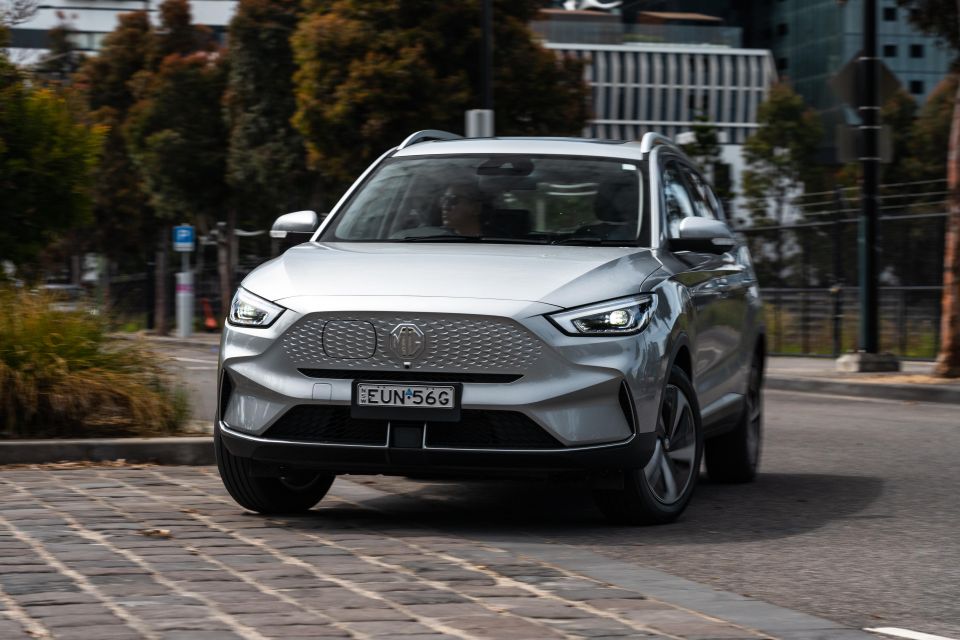
Where expert car reviews meet expert car buying – CarExpert gives you trusted advice, personalised service and real savings on your next new car.
Looking at the MG ZS EV you’d think it’s not overly quick, but hopping in and actually driving the car is a completely different story.
The ZS EV’s electric powertrain provides instant and linear torque from a standstill, which doesn’t necessarily snap your neck but definitely shoves you back in the seat.
From 0-60km/h you’ll be keeping up with (or pulling ahead of) almost all the traffic at the lights without any troubles. Once you get above 60km/h acceleration tapers off and progress becomes more gradual. It’s definitely not slow by any means though.
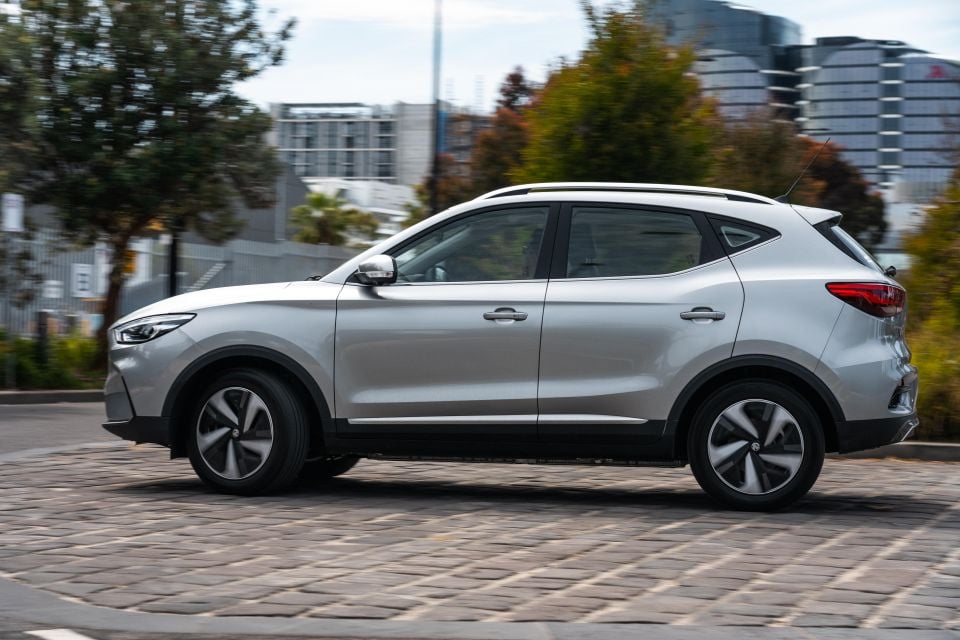
On dry roads there is little to no wheelspin when taking off, which is something a number of front-wheel drive EVs suffer from, including the pre-update ZS EV. Accelerating on wetter surfaces though can still be a little sketchy at times.
The ‘Normal’ driving mode can be a little bit sensitive occasionally when taking off in bumper-to-bumper traffic, with the ‘Sport’ mode even more severe. I reverted to using the ‘Eco’ mode, which dulled the throttle response, during these times until I got used to how rapid it can be from a start.
Driving the ZS EV in the city, it’s clear the car is in its element and where it’s most efficient. This is thanks in part to the kinetic energy recuperation system (KERS) with three levels of regenerative braking.
There were moments during my testing where I saw the energy consumption dip to around 13 to 15kWh per 100km range, which is extremely efficient. The Tesla Model 3 RWD, which is seen as a benchmark for EV efficiency currently, has a claimed ADR combined energy consumption of 13.4kWh per 100km.

One feature the ZS EV is missing is one-pedal driving which would smooth out the moments where the regenerative braking and physical braking interact awkwardly. You can tell when the physical brakes activate as the braking feels a lot stronger, rather than ramping up smoothly.
The suspension setup in the ZS EV is at its most comfortable at city speeds. It does a good job isolating you from pimply city streets, and doesn’t crash or bash into potholes and speed bumps. It feels relaxed within the confines of suburbia.
When you start to dial up the speed it’s not quite as composed. Over around 70km/h crests or bigger bumps and dips make the car feel unsettled. Rather than dealing with them in one motion, the car takes a few extra bounces to control its weight.
Body roll in the ZS EV is also noticeable, although it’s not exactly designed to be a sports car to start with.
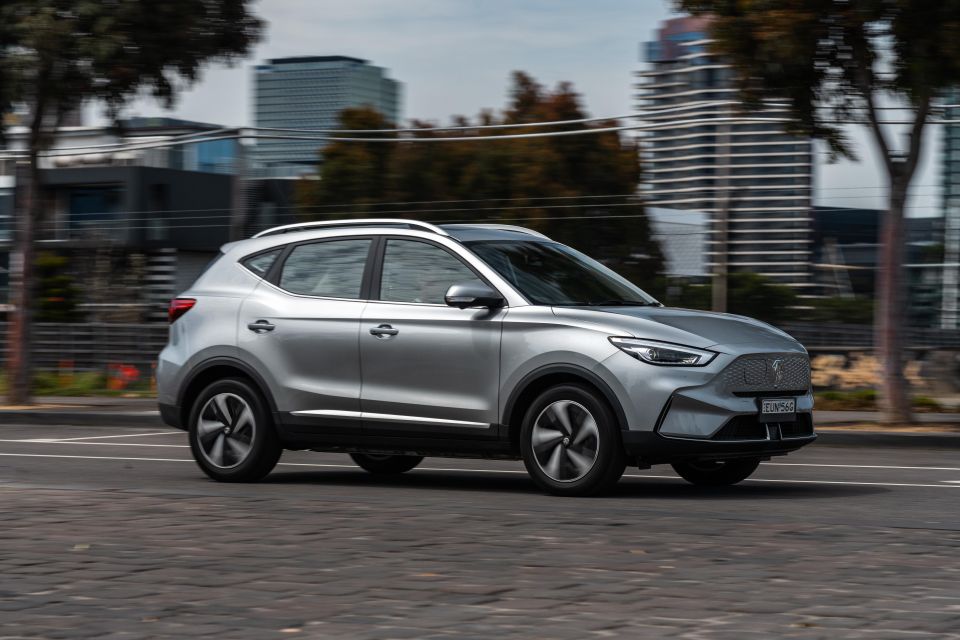
This is common in heavy PHEVs or EVs built on internal-combustion platforms initially designed to support lighter petrol or diesel-only powertrains.
There’s quite a bit of road noise at highway speeds, made more apparent by the lack of internal-combustion engine sound.
There’s still some room for improvement in MG’s driver assists as well. Adjusting the cruise can be a hassle because a single flick of the stalk ups the speed by 5km/h, and a long push gives you 1km/h increments. This latter input can be laggy, and it’s easy to miss your intended speed.
The lane-keep assist function on the ZS EV can send you bouncing from one sideof the lane to the other… and back again, and again, and again. I turned this feature off because I felt like the system was getting in my way, and forcing me to fight it constantly.
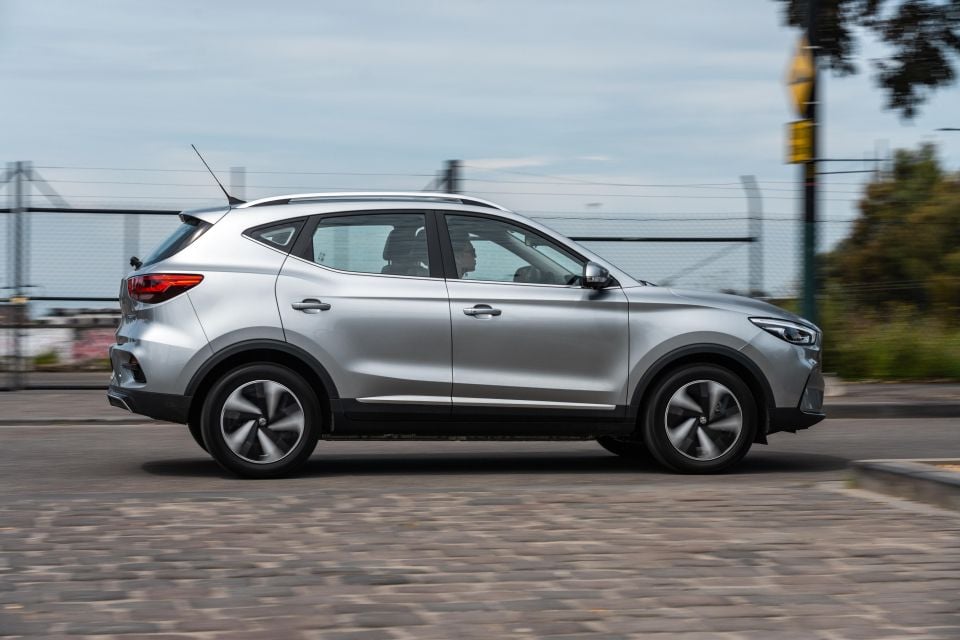
During our time with the ZS EV I did one rapid charge where the battery went from around 20 per cent to 80 per cent. This session took about 45 minutes and at its fastest I saw the maximum 80kW DC charge speed for a brief period.
After this charging session I packed up and drove off without realising I had left the charging flap open on the front grille. No wonder I was getting some strange looks.
Adding in a feature where it tells the driver the charging flap is still open or, better yet, a feature that closes the flap for you would be greatly appreciated if you’re forgetful (or not very clever) like me.


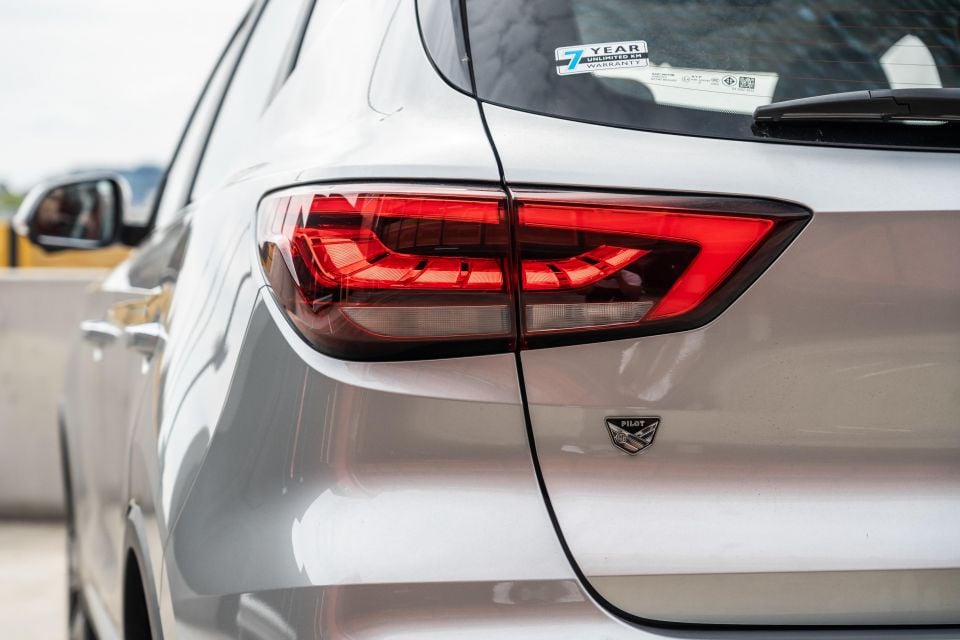

ZS EV Essence highlights:
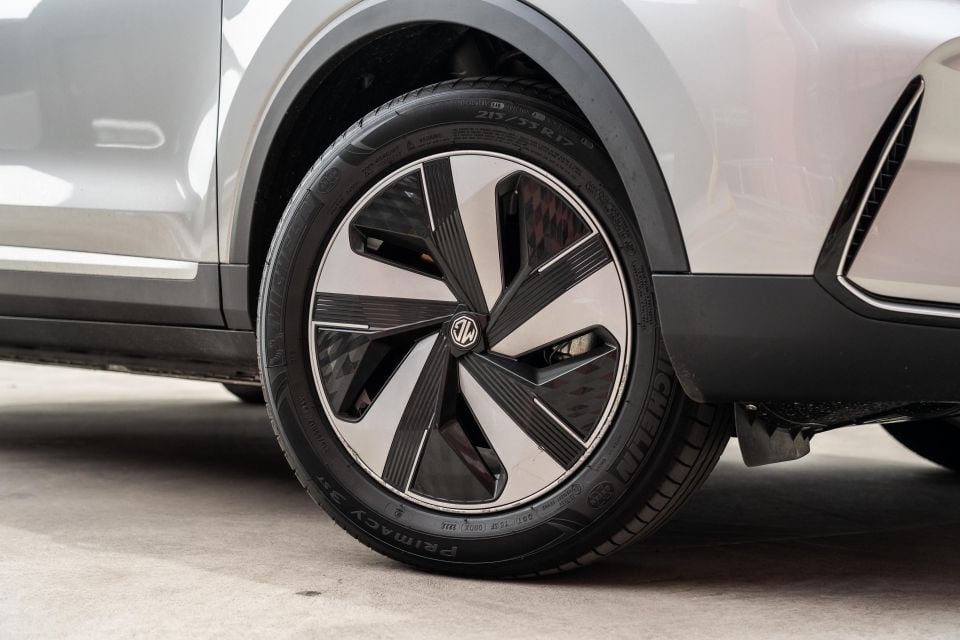

You can also purchase the following accessories at an additional cost:
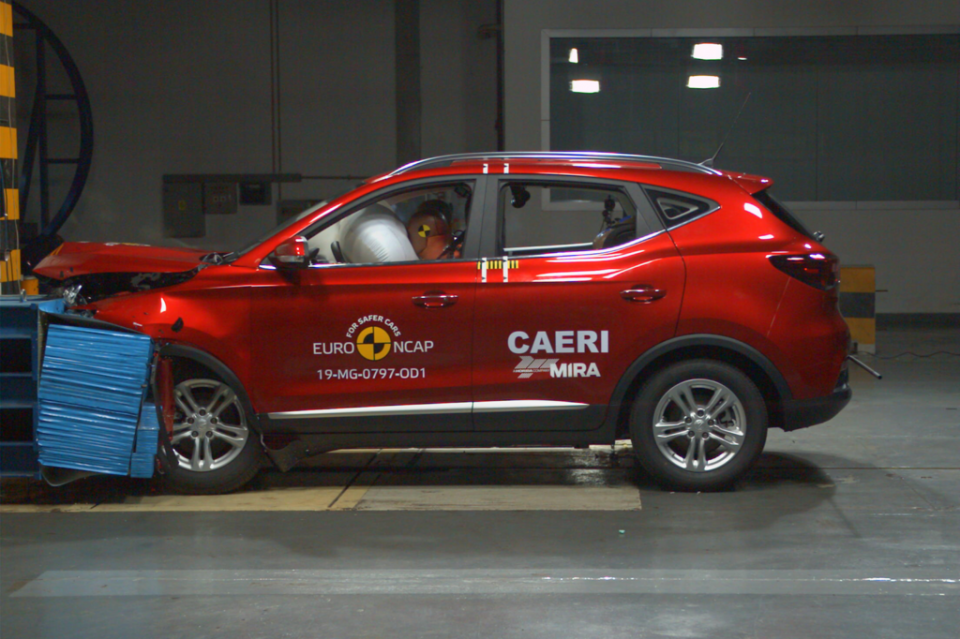
The pre-facelift MG ZS EV received a five-star safety rating from ANCAP based on testing conducted in 2019.
It scored 90 per cent for adult occupant protection, 84 per cent for adult occupant protection, 64 per cent for vulnerable road user protection, and 71 per cent for safety assist.
However, this rating does not carry over to the facelifted model. MG has told us it is currently working with ANCAP to deliver an updated rating for the new model.
Standard safety features include:
There’s a new MG iSmart phone app that’s designed to let you remotely check and control certain functions, including the vehicle charging status, air-conditioning, and locks. It can also remotely locate your vehicle.

The MG ZS EV comes with a seven-year, unlimited-kilometre warranty for both the vehicle and its high-voltage battery.
Logbook servicing is required every 24 months or 20,000km, with the first seven services capped at $268 each – with the exception of the 80,000km service, which costs $807. This equates to $2415 over 14 years.
MG Australia currently offers dealer-led solutions for home charging, selling 7kW single-phase and 11kW three-phase solutions wall boxes with inbuilt RFID reader, ethernet, and Wi-Fi connectivity.
The units cost $1990 and $2090 respectively before installation, and will charge any vehicle with a Type 2 socket.
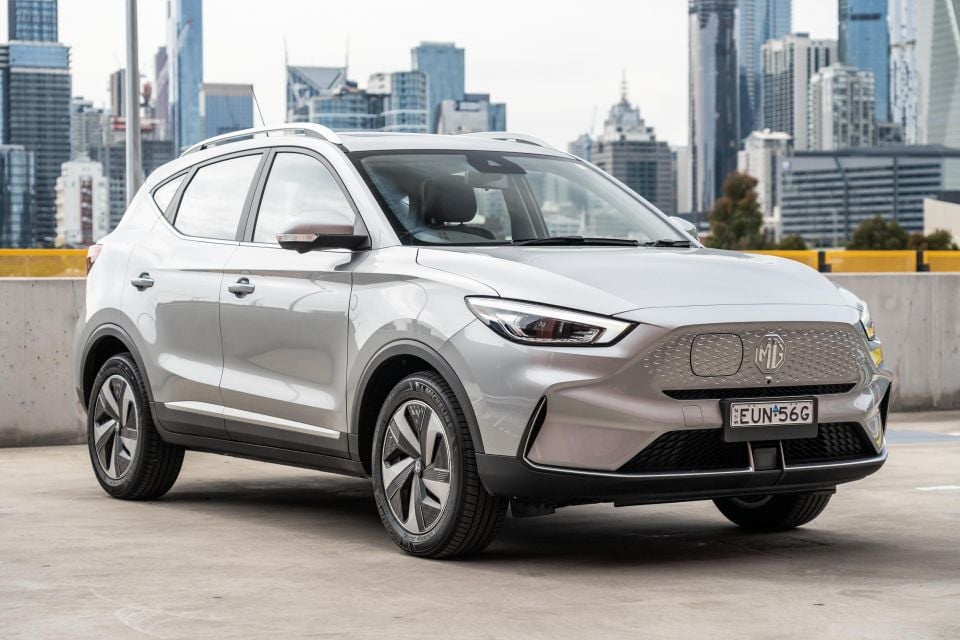
The ZS EV is quite compelling as an affordable electric vehicle given MG’s established dealer network in Australia and easy-to-understand service and warranty programs.
MG has done a good job sprucing up the ZS EV with the refreshed look inside and out. The extra range is well received.
The ZS EV is lacking polish in some areas though, including the ride and handling, but you can’t really complain when you’re spending less than $50,000 for a new, all-electric vehicle.
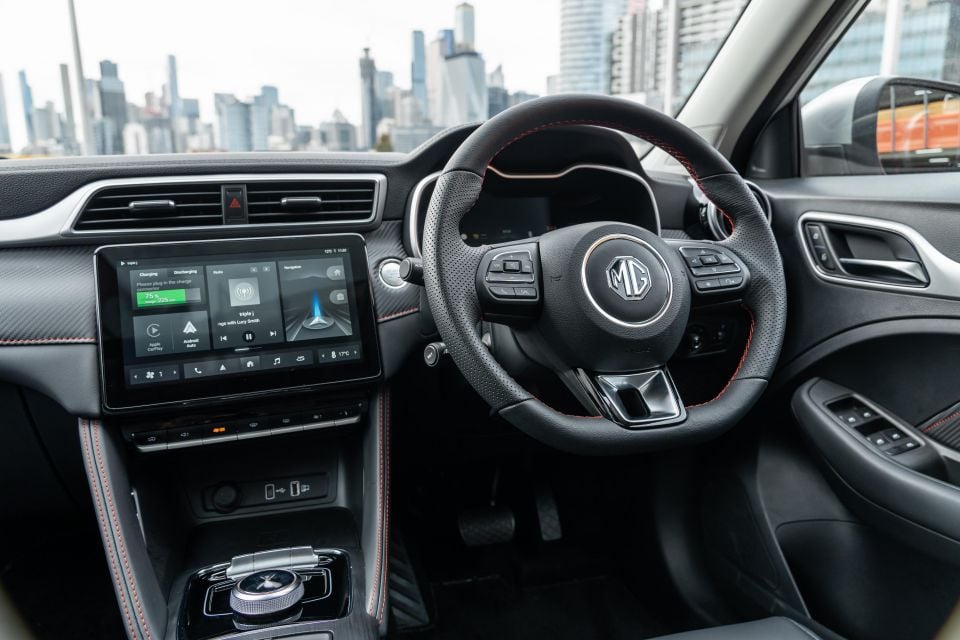
The range-topping ZS EV Essence shapes as the pick if you want a car filled to the brim with technology.
It’s worth noting if you want key safety tech such as blind-spot monitoring and rear cross-traffic alert, the Essence is the only option.
If you’re budget-minded and don’t need flashy features such as a panoramic glass sunroof and faux leather seats however, the base ZS EV Excite makes a lot more sense.
You’ll also be able to brag that you own the cheapest EV on sale locally at the moment.

Click an image to view the full gallery.
MORE: Everything MG ZS EV
Where expert car reviews meet expert car buying – CarExpert gives you trusted advice, personalised service and real savings on your next new car.
Jack Quick is an automotive journalist based in Melbourne. Jack studied journalism and photography at Deakin University in Burwood, and previously represented the university in dance nationally. In his spare time, he loves to pump Charli XCX and play a bit of Grand Theft Auto. He’s also the proud owner of a blue, manual 2020 Suzuki Jimny.


Josh Nevett
6 Days Ago


Ben Zachariah
7 Days Ago


Derek Fung
8 Days Ago
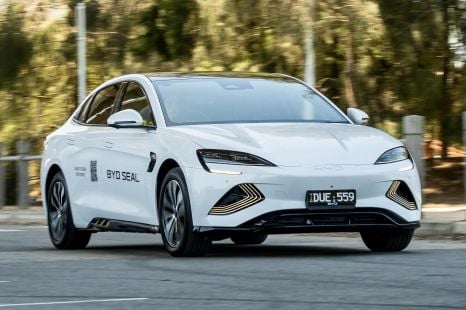

Max Davies
14 Days Ago
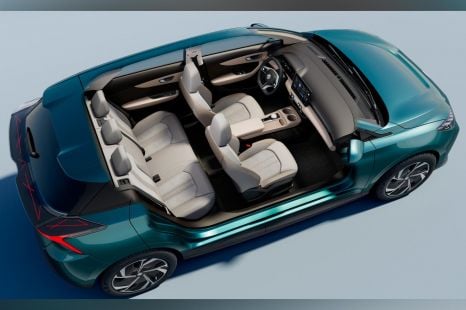

William Stopford
14 Days Ago
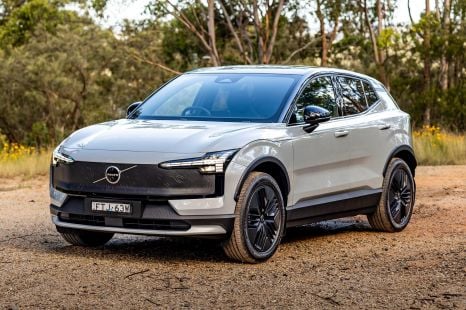

Matt Campbell
16 Days Ago